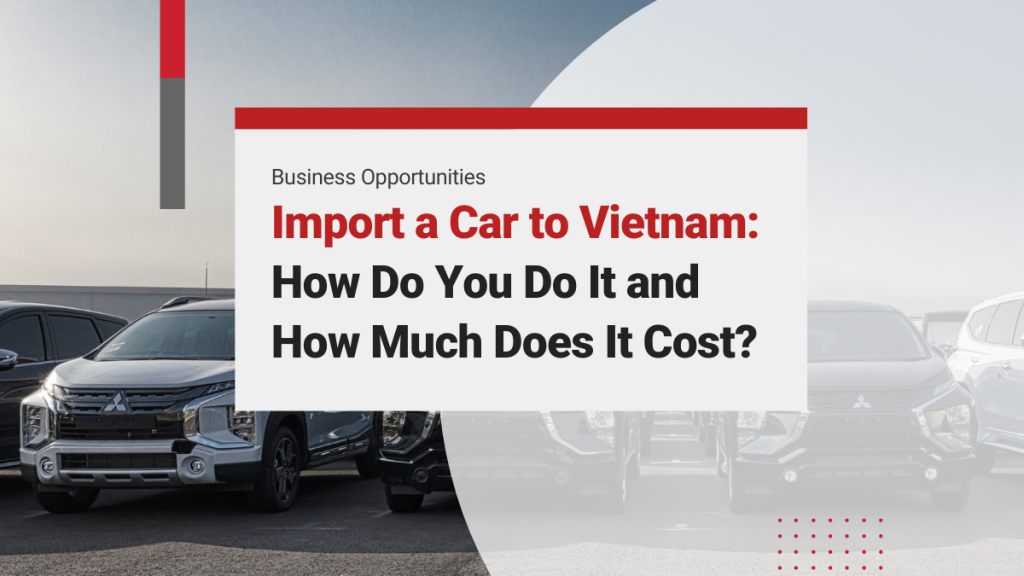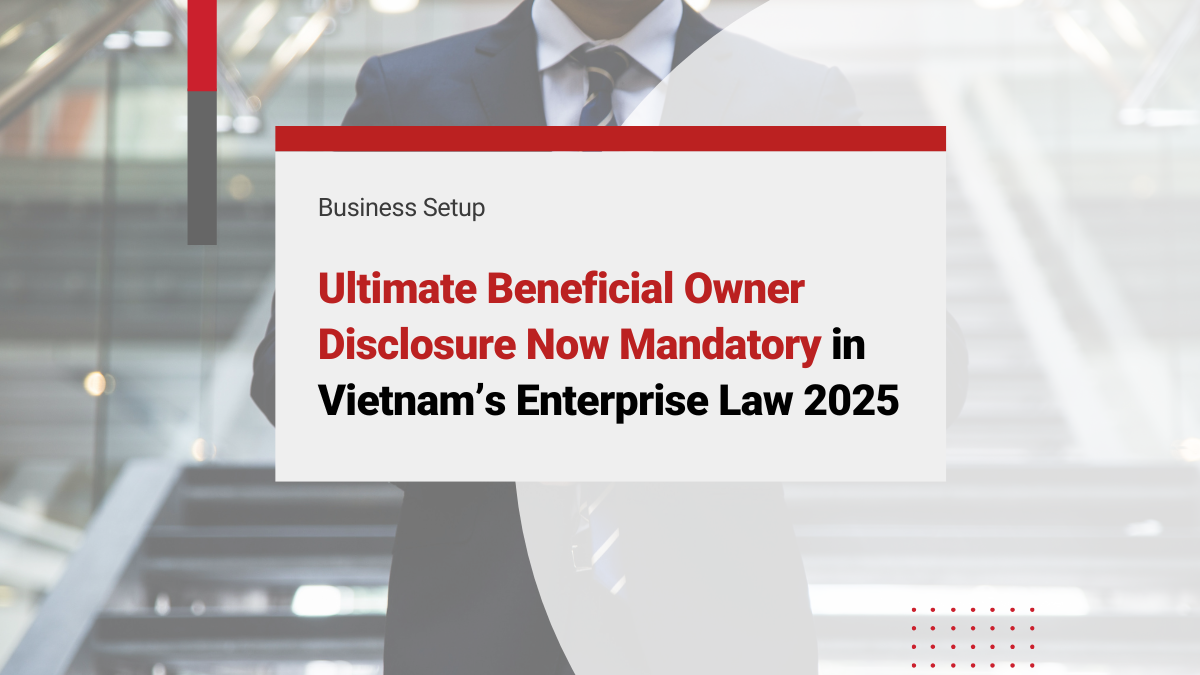To import a car into Vietnam as a foreigner, you’ll need to navigate specific regulatory requirements and comprehensive documentation to meet Vietnamese customs regulations. This process can be complex, as the government enforces strict guidelines to prevent issues at clearance and ensure compliance. Partnering with a reliable bookkeeping services provider can also help streamline financial and import-related paperwork, making the process smoother and more transparent. Understanding the local legal framework is also essential before beginning the import process, as Vietnam has specific rules regarding vehicle ownership and documentation.
In this article, we present a straightforward guide on Vietnam car import options, required prerequisites, and major steps to enable you to navigate the process successfully. To have an effective, hassle-free experience, it’s advisable to use experienced consultancies such as InCorp Vietnam.
Overview of Car Market in Vietnam
Between January and April 2025, 63,520 vehicles worth US$1.4 billion came into the market from Thailand, Indonesia, and China. In fact, in April 2025 alone, imports hit 17,063 units (US$423 million) – a 47.7% volume jump versus April 2024.
Consumer demand is trending toward specific segments and technologies. There is a visible shift in consumer behavior toward smarter, fuel-efficient, and lower-emission vehicles, aligning with Vietnam’s broader strategy to decarbonize transport and reduce urban air pollution. The majority of imported vehicles are priced between VND 350 million and VND 1.2 billion, with growing interest in MPVs and SUVs such as the Mitsubishi Xpander, Ford Everest, Hyundai Stargazer, and Toyota Yaris Cross.
Meanwhile, the eco-friendly segment is gaining traction with battery-electric vehicles benefiting from tax breaks and registration-fee exemptions. The luxury segment is also expanding, reaching an estimated US$1.9 billion in 2024, with demand for brands like Mercedes-Benz, BMW, Lexus, and Jeep/RAM remaining strong. Recent regulatory updates, such as reduced duties under Decree 73/2025 and the extension of EV incentives, have supported these shifts and have spurred new entries by Chinese players such as BYD, Lynk & Co., Omoda, Haval, and Jaecoo.
Prerequisites and Conditions for Importing a Car into Vietnam
Foreign Car Import Prerequisites
Vietnam limits imports of personal cars to vehicles satisfying these requirements:
- Seating & drive side: No more than nine seats; permanent registration left-hand drive (right-hand drive permitted for tourists for a maximum of 30 days).
- Age & ownership: Less than five years old from the date of manufacture; owned and registered in your name for six months with a minimum distance of 10,000 km.
- Emissions & green incentives: All new passenger-car imports must comply with Euro 5 exhaust standards. Meanwhile, the government has extended battery-EV incentives – battery-electric vehicles enjoy a registration fee waiver plus the reduced 3% SCT rate through 29 February 2027 – to encourage greener fleets.
Additionally, the car must have an overseas registration plate and follow the safety standards of the country of origin. Once a foreign driver fulfils all the requirements for driving in Vietnam, they can import a car that follows the import criteria.
Read Related: Secure a Certificate of Origin in Vietnam: Essential Tips for Foreigners
Foreign Driver Prerequisites
Before you import a car and start driving in the country, you must ensure that all foreign driver conditions are met. This includes:
- Importer credentials: Passport, visa, or residence permit that has at least six months’ validity, and a work permit or temporary residence certificate.
- Import cap: Single personal car per person; firms need to possess an auto-import permit.
- License: You must possess a driver’s license that aligns with the car to be imported.
In short, to import a car into Vietnam, you must be its registered owner, with registration in your home country for at least six months and at least 10,000 km of mileage. Vehicles over five years old or those with prior ownership changes cannot be imported.
The car must arrive fully assembled—modifications like engine swaps or alterations to vehicle identification numbers (VINs) are prohibited, as these may delay customs clearance.
Read Related: Understanding the Vietnam Temporary Residence Card: Requirements, and Validity
Individual vs. Company Imports
While individuals can import a single personal-use car if all conditions are met, companies face stricter requirements. A vehicle manufacturer must authorize businesses and possess proper dealership or service centre infrastructure to qualify. Additionally, commercial entities are generally not allowed to import used vehicles under current regulations.
Vehicle Import Options in Vietnam
To further understand the question, you must thoroughly know the options you have. There are certain factors to consider before you can import a car to Vietnam. This includes:
- The duration of use: whether the car will be imported temporarily (for a few months or years) or permanently
- Ownership: whether you have been the owner of the car for over a year
- Age of the Vehicle: If your vehicle is 20 or more years old
To import a car into Vietnam, you must be its registered owner, with registration in your home country for at least six months and at least 10,000 km of mileage. Vehicles over five years old or those with prior ownership changes cannot be imported. The car must arrive fully assembled—modifications like engine swaps or alterations to vehicle identification numbers (VINs) are prohibited, as these may delay customs clearance. Notably, both left-hand and right-hand drive vehicles are allowed in Vietnam, despite right-side driving rules.
Shipping Methods Available
While importing a car to Vietnam, you must take into account the various container shipping methods available at your disposal as per Vietnamese law. The best ways to ship a vehicle to Vietnam include:
- Air freight: For quick overseas import, it is advisable to opt for an air freight service that is not subjected to lengthy shipping times and port delays. This is the quickest way, as the car gets delivered in 3–10 days based on customs clearance and documentation. It costs roughly US$8,000–15,000 per car.
- Roll-On/Roll-Off (RORO): In this particular way of transporting cars overseas, your car has to be in run-and-drive condition as it needs to drive on and off the ship. You can not put anything inside the vehicle while shipping it. The RORO shipping-enabled ports vary, and their rates vary accordingly. On average, it takes 2-4 weeks from Asia, 22-30 days from the US West Coast, and costs a minimum of US$1,550 for a compact car.
- Container shipping: The foremost way of importing cars is container shipping, which can accommodate 1-6 cars at a time, based on their size. The automobiles can either be project cars or run-and-drive cars.
Moreover, you get consolidation when shipping to the port, as you save money by transporting your car with other vehicles in the same container. However, high-value automobiles are loaded into specific 20 ft or 40 ft containers.
- Full Container Load (FCL): A secure, though pricier, shipping option where the vehicle occupies the entire container space, avoiding shared terminal handling fees. Once loaded, the vehicle is locked, transported, and inspected upon arrival in Vietnam, including photos and condition checks. This method offers safer and faster transport, with weekly scheduled departures, compared to shared containers or RORO. This service offers weekly sailings, with a general transit time of 3-6 weeks.
- Less Than Container Load (LCL): A budget-friendly shipping option where multiple shipments share a single container. Although you wait until the container is full before shipping, your vehicle is safely secured using the R-RAK steel loading system. This method allows you to share the costs of the 40-foot container, terminal handling, and customs clearance with other vehicle owners.
Primary ports of entry are Cai Lan, Hai Phong, Da Nang, and Ho Chi Minh City.
Importing a Car to Vietnam? Check out InCorp Vietnam’s Bookkeeping Services in Vietnam
Requirements to Import a Car into Vietnam
Once you’re familiar with all the essential prerequisites to import a car to Vietnam, the next step involves collecting and submitting the required documents to the Vietnamese Customs Department. Efficient customs clearance starts with a complete set of properly authenticated documents. Have the following ready before shipping:
- Automobile Import License: Valid for 120 days and non-transferable; issued by the Ministry of Industry and Trade.
- Certificate of Origin (C/O): Confirms country of manufacture; requires preferential duty under ATIGA.
- Bill of Lading & Customs Declaration: CIF value, VIN, engine and chassis numbers, and cargo description.
- Foreign Registration Certificate: Original and notarized Vietnamese translation with a minimum of six months’ registration.
- Commercial Invoice & Insurance Certificate: Proof of transaction value and marine cargo insurance (CIF terms).
- Customs Broker Authorization: Power of attorney for your clearance agent.
- Technical Safety & Environmental Certificate: Post-arrival inspection documentation.
- Valid ID & Residence Documents: Passport, visa or residence permit, and work permit or temporary residence certificate.
- Health & Quarantine Certificates (if necessary): For cars with leather or bio-sensitive parts.
Make sure all documents are legalized in the country of origin. Missing or incorrect paperwork is the most common reason for delays and fines.
Upon arrival in Vietnam, a customs officer reviews all documents, including the import license, bill of lading, and customs declaration, followed by a physical inspection of the vehicle. You may request to view the car before inspection, but this must be done under the officer’s supervision.
Read More: Trade Logistics in Vietnam: Top Megaports and Their Impact from Saigon to Hai Phong
How Much Does It Cost to Import a Car into Vietnam?
It is essential to keep in mind that the cost to import a car in Vietnam varies according to the model and the build of your vehicle, along with the transport method used, your location (country), and your port of departure.
Your destination port and the availability of the services you have chosen also play a crucial role in determining the actual costs. Moreover, you have to take into account additional costs like vendor fees, storage and cleaning costs, along with Vietnamese customs duties and taxes.
Import duties are computed on the CIF (cost, insurance, freight) value in order:
- Import Duty: 0% (ATIGA); 32–50% (2.0–2.5 L under MFN, lowered as per Decree 73/2025); up to 70% otherwise.
- Special Consumption Tax (SCT): 35–150% (gasoline/diesel graduated by engine capacity); hybrids 70% of normal SCT; battery EVs 3% until Feb 2027 (11% thereafter).
- Value-Added Tax (VAT): 10% on (CIF + duty + SCT).
- Used Car Surcharges: If you’re considering importing a used vehicle, be aware that Vietnam imposes flat surcharges in addition to regular duties and taxes. These include:
- US$10,000 for used cars with engine capacity ≤ 1,000 cc
- US$15,000 for used cars with engine capacity > 2,500 cc
These surcharges apply regardless of the car’s actual market value and can significantly increase total costs.
Example – US compact gasoline car (CIF US$30,000):
- Duty (70%): US$21,000 → Subtotal US$51,000
- SCT (50%): US$25,500 → Subtotal US$76,500
- VAT (10%): US$7,650 → Total ≈ US$84,150
Example – ASEAN EV (CIF US$30,000):
- Duty (0%): US$0 → Subtotal US$30,000
- SCT (3%): US$900 → Subtotal US$30,900
- VAT (10%): US$3,090 → Total ≈ US$33,990
Extra charges are freight & insurance (CIF), broker fees, port handling, quarantine cleaning, local compliance modifications, and registration fees.
Read Related: Value-Added Tax in Vietnam: Guide to Understanding VAT for Business Success
What to Do After the Arrival of Your Imported Car?
Your import fees don’t stop with duties and taxes – registering costs also have to be factored into Vietnamese law. Foreigners are required to register their vehicles after customs clearance within three working days. Take these step-by-step instructions to make it easier:
- Customs clearance & payment
Present your import license and bill of lading, commercial invoice, C/O, and translated registration documents; pay SCT, duties, and VAT; then get the Customs Release Certificate.
- Technical safety & environmental inspection
Register within 10 days with the Vietnam Register or an authorized centre; get the Certificate of Technical Safety & Environmental Protection after passing.
- Local traffic police registration
Within 3 working days after inspection, present Customs Release Certificate, safety/environment certificate, registration form, proof of insurance, passport, visa/residence permit, and work permit/residence certificate; pay Registration Tax (10–12%; EVs exempt until Feb 2027).
- License plate issuance
Get a temporary plate (valid up to 20 days, extendable once for 20 days); after 7–15 days, swap it with your permanent plate. Foreign-owner plates start with “NG” or “NN,” followed by provincial codes.
- Ongoing compliance
Retain original registration and insurance within the vehicle; arrange roadworthiness inspections and insurance renewals annually to keep the vehicle legal.
Failure to meet deadlines or present required documents incurs penalties, so carefully plan every step.
Read More: Work Permit in Vietnam: Requirements, Procedures for Your Vietnam Work Visa
How InCorp Vietnam can Assist?
InCorp Vietnam’s experienced business consultants and lawyers make your entire importing process hassle-free. We start by processing and authenticating all required documents – your import permit, Certificate of Origin, commercial invoices, and customs documents – and arrange logistics by obtaining your bill of lading and clearing shipment timetables with clear tracking.
When the shipment arrives, we clear customs and pay taxes in full, compute duties, file declarations, and negotiate payments to prevent surprise expenses. We then oversee your car’s technical and environmental checks at authorized centres, obtaining the necessary certification before submitting all the documents to the local Traffic Police for registration and issuance of license plates.
By bundling all these services under one roof, InCorp Vietnam reduces administrative hassles, avoids clearance delays, and gets your imported car road-worthy most efficiently.

clients worldwide

professional staff

incorporated entities in 10 years

compliance transactions yearly
Learn the Right Setup for Business
Expansion in the Vietnam
Frequently Asked Questions
Can you import a car to Vietnam?
- Yes, you can import a car to Vietnam, but it is subject to strict regulations and high import taxes. Individuals must meet specific conditions, such as owning the car abroad and residing overseas for a certain period before import. Imported vehicles are subject to import duty, special consumption tax, and value-added tax. Additionally, the car must comply with Vietnamese technical and environmental standards.
What does import mean in cars?
- In the context of cars, "import" refers to a vehicle that is brought into a country from another country, typically for sale or personal use. Import cars may be subject to specific regulations, taxes, and duties depending on the country's laws, such as Vietnam's import tariffs and registration requirements.
Which country is best to import cars?
- The best country to import cars from depends on factors such as vehicle type, cost, brand preference, and import duties. Commonly favored countries include Japan (for used and fuel-efficient cars), Germany (for luxury vehicles), South Korea (for affordability and features), and the United States (for a wide model variety and competitive pricing). Consider each exporting country's compliance with Vietnamese import regulations and availability of left-hand drive vehicles.






